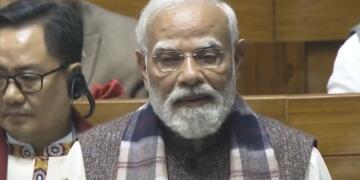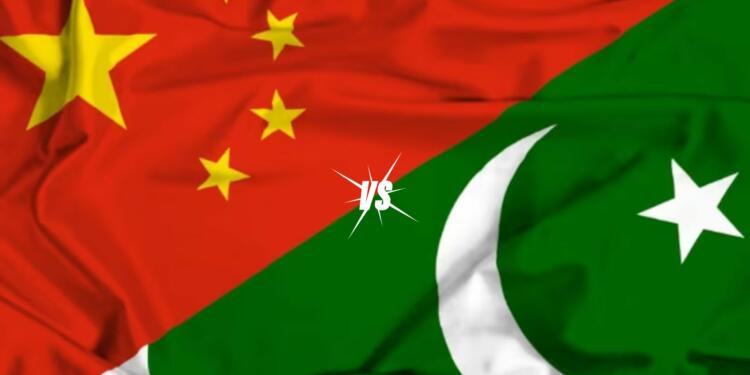The China-Pakistan Economic Corridor (CPEC) is a flagship initiative under China’s Belt and Road Initiative (BRI), aiming to connect Xinjiang in China with Gwadar Port in Pakistan, enhancing trade and economic cooperation. Despite its strategic significance, CPEC grapples with numerous challenges and uncertainties. These include security threats from militant groups, mounting debt obligations, and ethnic tensions along its route. The project’s success hinges on navigating these complexities and fostering cooperation between China, Pakistan, and other stakeholders to unlock its vast potential for regional development and connectivity.
A Balancing Act
Security threats in the form of militant groups present a significant challenge to the China-Pakistan Economic Corridor (CPEC), turning it into a precarious balancing act for both countries involved. The presence of diverse insurgent groups, including Uyghur fighters, Taliban factions, and the Baluchistan Liberation Army (BLA), poses grave risks to project progress and Chinese investments in Pakistan.
The Uyghur fighters, driven by their grievances against Chinese oppression in Xinjiang, have found refuge and support among certain factions within Pakistan. This has resulted in their involvement in terrorist activities, exacerbating security concerns along the CPEC route. Additionally, the Taliban, although primarily focused on Afghanistan, have demonstrated their ability to destabilize neighboring regions, including parts of Pakistan traversed by the corridor.
Furthermore, the Baluchistan Liberation Army, striving for independence from Pakistan, has been actively targeting Chinese interests as a means to assert its agenda. Attacks on Chinese engineers, infrastructure projects, and military installations have underscored the vulnerability of CPEC to regional insurgencies.
The impact of insurgency on project progress and Chinese investments cannot be overstated. Security breaches, such as attacks on infrastructure and personnel, not only disrupt construction activities but also instill fear and uncertainty among investors. These incidents tarnish Pakistan’s image as a reliable investment destination, deterring potential stakeholders from engaging in the project.
Response To Security Challenges
In response to these security challenges, Pakistan has been compelled to adopt measures aimed at managing risks while balancing its relations with China and the United States. The Pakistani government has deployed security forces to protect CPEC infrastructure and personnel, intensifying counterinsurgency operations in volatile regions. However, the effectiveness of these efforts has been hindered by the intricate nature of militancy and the porous borders facilitating cross-border attacks.

Moreover, Pakistan’s diplomatic maneuvers seek to navigate the delicate balance between its strategic partnership with China and its engagement with the United States. While China remains a crucial ally in Pakistan’s economic and security pursuits, the United States offers diplomatic support and financial assistance, albeit with its own set of conditions and interests.
The recent visit of the US Ambassador to Baluchistan underscores Pakistan’s attempts to assuage American concerns regarding security and stability along the CPEC route. By engaging with both China and the United States, Pakistan aims to demonstrate its commitment to addressing security challenges while safeguarding the interests of its allies.
Also Read: From Neutrality to Leadership: India’s Evolution in South China Sea Affairs
Economic Strain: Debt and Default
Pakistan’s economic landscape is marred by the weight of mounting debt obligations, presenting a significant challenge to the viability and sustainability of the China-Pakistan Economic Corridor (CPEC). The country finds itself grappling with substantial debts owed to both China and international lending agencies, exacerbating its economic strain and jeopardizing the progress of key infrastructure projects.
The debt burden owed to China, stemming from investments in CPEC projects, has reached alarming levels, raising concerns about Pakistan’s ability to fulfill its repayment obligations. Additionally, loans acquired from multilateral lending agencies such as the International Monetary Fund (IMF) and the World Bank further compound Pakistan’s debt woes, exacerbating its economic fragility.
The economic instability fueled by mounting debt obligations has profound implications for the viability of CPEC projects and Chinese investments in Pakistan. The precarious financial situation undermines investor confidence, leading to delays, disruptions, and even cancellations of crucial infrastructure developments. Furthermore, economic turmoil diminishes Pakistan’s capacity to attract foreign direct investment (FDI) and finance critical sectors essential for CPEC’s success, such as transportation, energy, and telecommunications.
Pakistan’s desperate economic circumstances have prompted calls for renegotiation and discounts on project costs associated with CPEC, further complicating the corridor’s sustainability. The government’s demands for favorable terms and concessions from Chinese stakeholders reflect its urgent need to alleviate financial pressures and mitigate the risk of default. However, such negotiations risk straining bilateral relations and undermining the long-term viability of CPEC investments.
Moreover, Pakistan’s insistence on renegotiation and discounts underscores broader concerns regarding the feasibility and financial soundness of CPEC projects. The inability to meet repayment obligations and secure favorable terms threatens to derail ongoing initiatives, stall future developments, and diminish the overall attractiveness of Pakistan as an investment destination.
Also Read: How Pakistan learned the Made in China error the hard way
Geopolitical Dynamics: Shifting Alliances
Pakistan’s diplomatic maneuvering between China and the United States reflects its efforts to leverage support and investments while navigating complex geopolitical dynamics. As a key player in South Asia, Pakistan seeks to balance its strategic partnerships with both countries to maximize economic benefits and security cooperation.
Recent diplomatic engagements, such as the visit of the US Ambassador to Baluchistan, underscore Pakistan’s attempts to cultivate closer ties with the United States amidst its longstanding alliance with China. The significance of such visits lies in their implications for regional stability, economic development, and security cooperation. By engaging with the United States, Pakistan aims to diversify its diplomatic alliances and secure additional support for CPEC projects.
China’s recalibration of the Belt and Road Initiative (BRI) in response to changing geopolitical realities reflects its adaptability to emerging challenges and opportunities. As geopolitical dynamics evolve, China seeks to optimize its strategic investments and enhance cooperation with partner countries. The recalibration of the BRI may involve prioritizing smaller projects, improving financial transparency, and addressing concerns related to debt sustainability and environmental impact.
Also Read: Agni-V: India’s Firestarter or China’s Sleepless Nights?
Ethnic Strains and Resistance
Ethnic tensions in regions traversed by the CPEC, including Baluchistan, Pakistan-occupied Kashmir (PoK), and Gilgit-Baltistan, pose significant challenges to project continuity and Chinese interests. Local populations in these areas harbor grievances related to marginalization, environmental degradation, and the perceived lack of benefits from CPEC initiatives.
The Baluchistan region, in particular, has witnessed longstanding resistance to Pakistani authority and Chinese presence. The Baluchistan Liberation Army (BLA) and other separatist groups have targeted CPEC infrastructure and personnel, reflecting deep-seated grievances and aspirations for autonomy.
Similarly, ethnic tensions in PoK and Gilgit-Baltistan complicate efforts to ensure smooth project implementation and garner local support. The Shia-majority populations in these regions often feel marginalized by the Sunni-dominated Pakistani administration and harbor aspirations for greater autonomy or integration with India.
The implications of regional unrest on project continuity and Chinese interests are significant. Security challenges, including attacks on infrastructure and personnel, disrupt construction activities and deter foreign investment. Moreover, social unrest and discontent undermine the stability of CPEC projects and hinder efforts to promote economic development and regional integration.
The China-Pakistan Economic Corridor (CPEC) faces multifaceted challenges, including security threats, economic strain, and ethnic tensions, posing risks to regional stability and economic development. To unlock its full potential, concerted efforts from China, Pakistan, and other stakeholders are imperative. Diplomatic maneuvering, transparent financial practices, and addressing local grievances are essential to mitigate risks and ensure sustainable progress. Only through collaborative action can CPEC overcome its hurdles and emerge as a catalyst for regional prosperity and integration.
Also Read: From Neutrality to Leadership: India’s Evolution in South China Sea Affairs





























